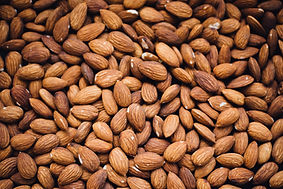The exorbitant Cocoa Bean prices should moderate in the coming year.
- ccinuts

- Jul 12, 2024
- 3 min read
Updated: Jul 14, 2024
Cocoa beans, the main agricultural/food commodity that shot up to prominence last year, saw prices increase from around US$2,500 to around US$11,000 per ton. While it takes around 6 to 9 months for the futures prices to be reflected in physical cocoa delivery contracts, it still negatively affected the working capital positions of global grinding giants (such as Olam and Barry Callebaut) by requiring them to provide more cash to cover the margin calls of their paper short positions.
A combination of low rainfall (El Nino), aging trees and plant diseases led to a very disappointing crop in Côte d'Ivoire & Ghana in 2023 (accounting for around 60-70% of the global cocoa bean crop). Actually, a similar issue is happening for cashew nuts with Côte d'Ivoire being the largest supplier of raw cashew nuts (RCN) in the world. The RCN crop is estimated to drop some 25% in Ivory coast in the 2024/2025 season.
Some say the cocoa beans price Roller Coaster is mostly a transitory issue, while others believe structural issues are at play and expect much higher cocoa bean prices (such as famous oil hedge fund manager Mr. Pierre Andurand).
In the food commodities space, several things happen when a crop disaster occurs, and a particular year's crop becomes critically low and causes a massive price jump (price jump is especially pronounced when a given region or country accounts for the global majority of a given crop). For example, in 2014 and 2015, Turkey (producing around 70% of the global hazelnut production) had its key hazelnut growing regions hit by bad weather, devastating the hazelnut crops. Accordingly, the hazelnut prices reached the historical highs, unfortunately, denting the hazelnut consumption in the subsequent years. First, shrinkflation: manufacturers shrink the package sizes and usage of expensive ingredients.
Secondly, substitution (and thus demand destruction for an expensive ingredient): manufacturers use less of the expensive ingredients and more of the cheaper ingredients. Fortunately, global agricultural commodity prices have moderated since the 2021/2022 highs (with S&P GSCI Agriculture at ~360), allowing manufacturers to substitute with more affordable ingredients (such as sugar and palm oil, and almond prices usually below the cost of production).
This is a famous story of Nutella-like hazelnut spreads. Around World War II, cocoa beans were extremely scarce. Ferrero Rocher, originally from the hazelnut-growing region of Piedmont in Italy, turned this tricky problem into a smart solution by creating a sweet paste made from hazelnuts, sugar, and a little of the rare cocoa.
Thirdly, high prices drive more crop planting all over the world. In the case of cocoa beans, farmers in Latin America and Asia (such as Indonesia) are much more responsive to price incentives and market signals than small household farmers in West Africa. The extremely high cocoa bean prices should encourage more plantings in and away from West Africa.
Additionally, fertilizer prices have also moderated (thanks to cheaper natural gas, with the Green Markets North American Fertilizer Index at around 500), which should help farmers in West Africa and elsewhere increase the yield from each cocoa tree in the coming years. The largest cocoa grinders such as Barry Callebaut AG, Cargill Inc., Olam International Ltd (ofi), and Guan Chong Berhad (GCB cocoa) support farmers with responsible and effective crop management solutions.
Now let’s do a hypothetical chocolate bar price increase study by using assumed proportions of the following ingredients to give the cheapest price to this hypothetical chocolate bar (assuming the lowest usage of the most expensive ingredient (less cocoa beans) while increasing the usage proportion of the cheapest ingredient - the sugar).

Based on this hypothetical chocolate bar and cocoa prices at US$9,000/ton in June 2024, our calculations show that the hypothetical chocolate bar price would have increased from $1.58/kg in June-2020 to $3.66/kg in June 2024, a whopping 131% increase over the past four years. If you increased the proportion of cocoa beans in a chocolate from our 30% assumption, your chocolate bar prices per kg would have increased even more in 2024.
In conclusion, we humbly estimate that cocoa bean prices have further to drop in the coming year towards the $5,000/ton mark from the current ~$9,000/ton price levels even without a recession.

Sources: Bloomberg, ft.com #Cocoa #cocoaBeans #IvoryCoast #Olam #OFI #BarryCallebaut #almonds #GCBcocoa #Ghana



Comments